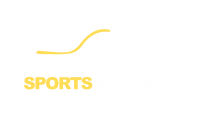Frequently Asked Questions
Press on a question below to jump to its answer:
Do I need to be involved with sport to benefit from sports and remedial massage?
How is sports and remedial massage different to other forms of massage?
Which techniques are commonly used during a massage session?
What are the benefits of sports massage?
What happens in the treatment session?
What do I wear?
How often should I have a sports massage?
Is there a governing body?
Are there any conditions which may prevent me from having a sports massage?
Do I need to be involved with sport to benefit from sports and remedial massage?
No not at all, sports massage can also be extremely effective in treating postural imbalances and muscle tightness caused by everyday living and working, and helps calm nervous tension.
How is sports and remedial massage different to other forms of massage?
Sports massage is a much deeper form of soft tissue massage than most other forms of massage. It incorporates specific techniques to meet the client’s needs and helps improve the clients overall condition. Sports massage is used for the treatment of injuries. It also helps recovery from hard workouts, fatigue, and overuse syndromes. It also helps improve postural imbalances.
Which techniques are commonly used during a massage session?
Soft Tissue Release (STR): stretches muscles, breaks adhesions between individual muscle fibres and realigns them in the correct position.
Muscle Energy Technique (MET): stretches, strengthens and breaks down scar tissue adhesions. This technique encourages a state of relaxation which allows the muscle to stretch beyond its current ability, however, does not allow flexibility beyond normal for that person.
Neuromuscular Technique (NMT): retrains the nervous system by nerve inhibition. This technique promotes a state of relaxation in the muscle fibres being treated, which has a knock on effect to the whole muscle. This reduces the level of muscle tension.
Connective Tissue Massage (CTM): breaks adhesions between the connective tissue (which surrounds every tissue structure in the body) and the underlying tissue structures so that they move freely and independently of one another.
What are the benefits of sports massage?
Sports massage reduces muscle tension and spasms. It assists in recovery of fatigued muscles by increasing blood flow through the tissues and also helps with the removal of waste products and toxins from your muscles. Muscle imbalances can be detected during massage and corrected before an injury occurs. Range of movement of joints can be improved as regular massage keeps your muscles long and flexible and therefore helps your overall performance in sport and in general stimulates circulation and helps relieve nervous tension.
What happens in the treatment session?
A brief history is taken along with your basic details allowing you to discuss areas of concern. Assessment of any problem areas through testing joints/muscles, range of movement and through palpation before deciding on a plan of action. The session will last either 30 to 60 minutes depending on the treatment required.
What do I wear?
You are required to keep underwear on and can wear a pair of shorts or a swimming costume if you feel more comfortable. Towels are used to cover areas of your body not being massaged.
How often should I have a sports massage?
This depends on the individual. If you are involved in heavy training or have postural problems and tight muscles due to your work/ occupation you would probably benefit from a massage every two to four weeks to keep your body in top condition.
Is there a governing body?
I am fully qualified, insured and registered with the Institute of Sports and Remedial massage (ISRM). A link to the ISRM website is provided on the home page. The ISRM has a national register of fully qualified and insured therapists.
Are there any conditions which may prevent me from having a sports massage?
Visit my page on contraindications

